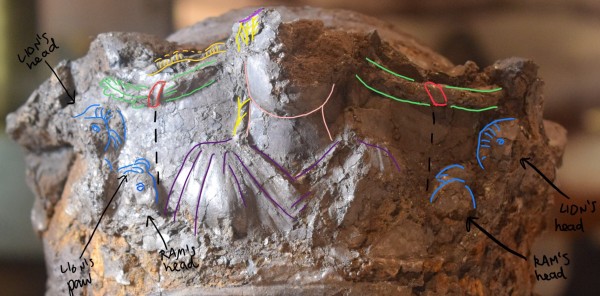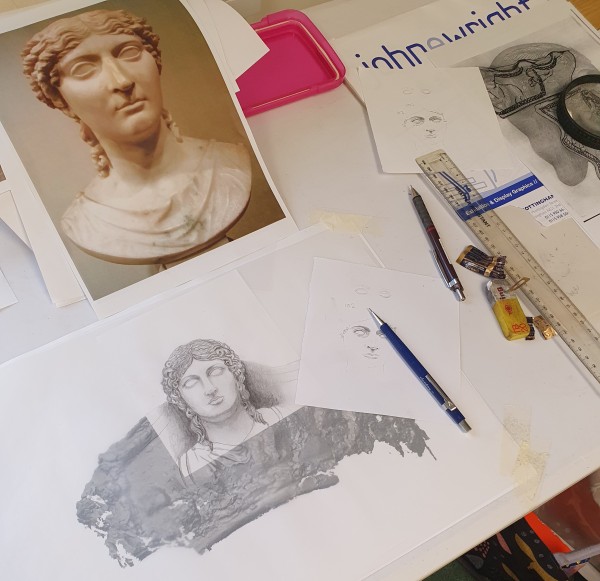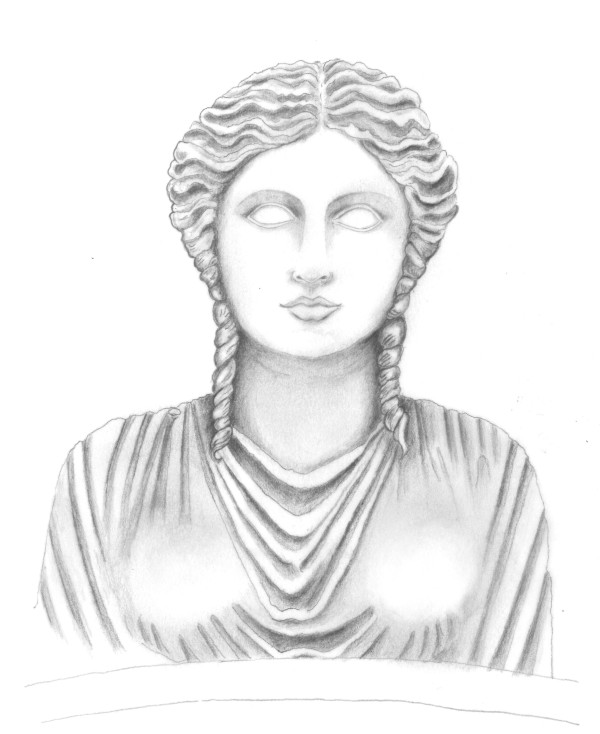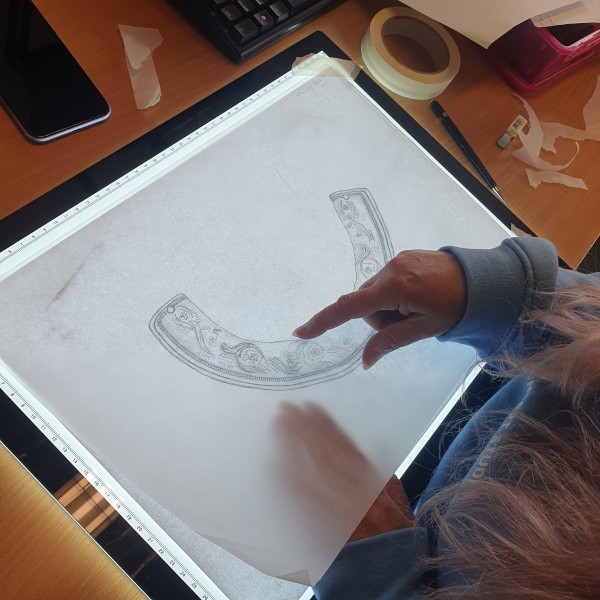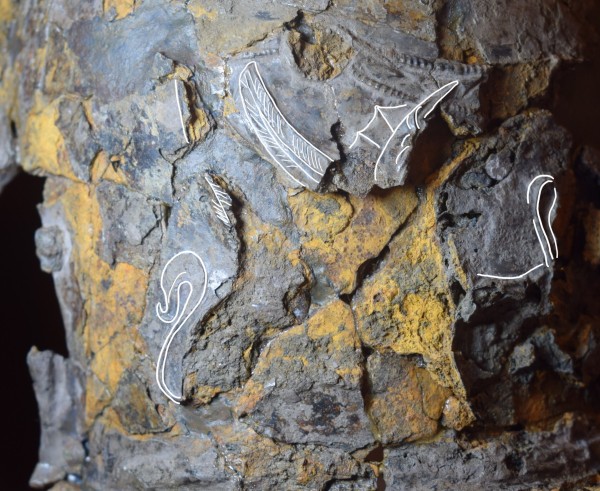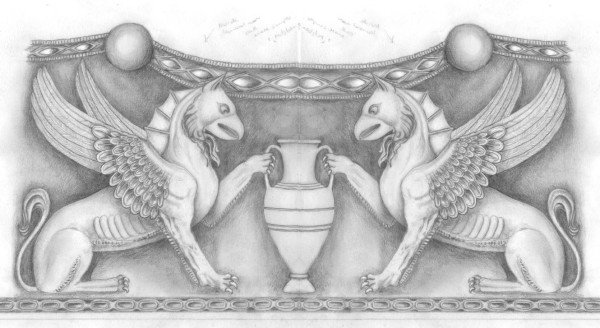21 March 2024
Investigating and Illustrating the Hallaton Helmet
We have commissioned two new replicas of the Hallaton Roman helmet thanks to generous local funders. But how did we work out what they should look like? This was a new and challenging process for all involved! We knew that the helmet would have originally had a very striking appearance as is common for high-status cavalry helmets of the Roman period. The original object’s silver surface had corroded and fragmented during the 2000 years it spent below ground but thanks to the amazing work of the conservation team, we could see tantalising elements of the decoration. A striking female figure flanked by lions and rams on the brow-guard, a laurel wreath on its crown, a scrolling foliate pattern on the neck-guard but other elements, particularly at the rear of the bowl and the linking motifs were difficult to establish.
We had previously commissioned archaeological illustrator Debbie Miles to produced technical drawings of the helmet parts and so she was familiar with the collection. However, we asked her to produce reconstruction drawings of the object’s estimated original appearance which is a very different approach.
Debbie worked closely with the museum collections team using the annotated photographs alongside 3D scans and prints of the object to create scaled designs for various sections of the design as well as in-person analysis of the helmet. Ideas were cross-referenced with other art forms from the 1st century AD such as stone sculpture and metalwork where elements of the motifs were missing.
The most-challenging area to recreate was the rear of the helmet bowl. This area is very fragmentary but there are a few remaining pieces of the design which proved to be key. Teresa noticed a tail, wing and ear along with a possible vase handle. On analysing the helmet once more, Debbie and Teresa noticed a webbed feature too. After consulting sculptural images from the same period, we believe the design to be a pair of opposed griffins holding a central amphora – a common design for Roman helmets due to the myth of griffins guarding treasure.
Our 2D design for the helmet was now ready to be transformed into a 3D design by our replica makers!

